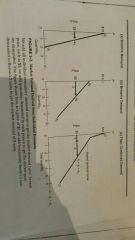![]()
![]()
![]()
Use LEFT and RIGHT arrow keys to navigate between flashcards;
Use UP and DOWN arrow keys to flip the card;
H to show hint;
A reads text to speech;
20 Cards in this Set
- Front
- Back
|
Utility |
Denotes satisfaction Subjective pleasure or usefulness that a person derives from consuming a good or service |
|
|
Marginal Utility |
Additional or extra utility gained from consuming another unit of a good |
|
|
Law of diminishing marginal utility |
The amout of marginal utility declines as a person consumes more and more units of a good |
|
|
Total utility |
Sum of all the utilities of consumed units of a good |
|
|
Equimarginal pronciple |
A consumer will achieve maximum satisfaction when the marginal utility of the last dollar spent on a good is exactly the same as the marginal utility on the last dollar spent on amy other good |
|
|
Ordinal utility |
Consumers need to determine only their preference ranking of bundles of commodities |
|
|
Substitution Effect |
When the price of a good rises, consumers will tend to substitute other goods for the more expensive goods in order to satisfy their desires more inexpensively |
|
|
Real income |
The actual quantity of goods that your money income can buy |
|
|
Income effect |
Thr change in quantity demanded that arises because a price change lowers real income |
|
|
Income elasticity |
% change in qty. Demanded ÷ % change in income |
|
|
Individual demand |

Demand of a single comsumer In demand curve, denoted with lowercase letters |
|
|
Market demand |
Demand of all consumers in a perticular market Denoted by capital letters in demand curve |
|
|
Substitutes |
An increase in price of good A will lead to an increase in demand of good B Ex. Beef & chicken |
|
|
Complements |
An increase in price of good A will lead to a decrease in demand of good B Ex. Cars and gas |
|
|
Independent goods |
An increase in price of good A will not affect the demand of good B Ex. Salt and books |
|
|
Price Elasticities |
HIGH -Goods with ready substitutes LOW - goods with little to no substitutes |
|
|
Income elasticities |
HIGH - luxury goods PROPORTIONAL GROWTH - staple commodities NEGATIVE - inferior goods (demand falls as income rises) |
|
|
Merit goods |
Goods whose consumption is thought intrinsically worthwile Ex. Free public education |
|
|
Demerit goods |
Goods whose consumption is deemed harmful Ex. Goods involving addictions like alcohol or cigarettes |
|
|
Consumer surplus |
The gap betweem the total utility of a goodand its total market value Result of law of diminishing marginal utility |

